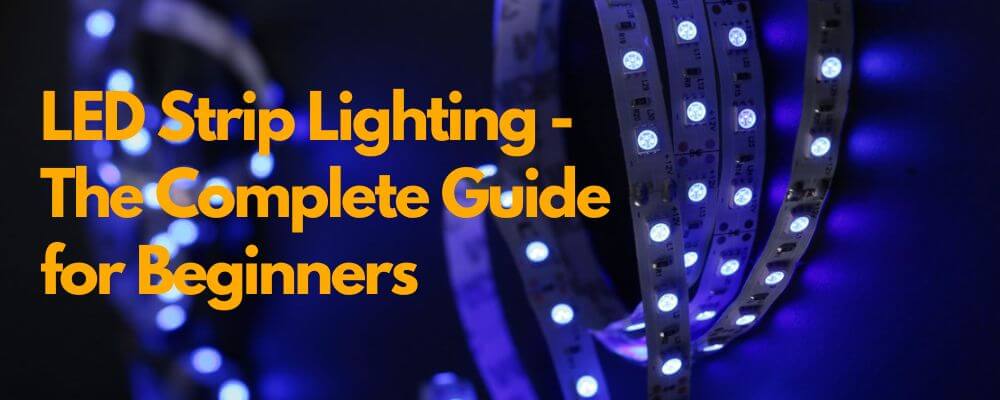LED Strip Lights are accepted as the world's most flexible in terms of application uses. Because it's challenging to name something that you can't use LED light strips, this article will take you through a basic but complete understanding of today's LED Strip Lighting, what it is LED Light Strip, and everything about it. Let's dive into it.
What Are The LED Light Strips?
An LED light strip, also called LED tape lights or LED ribbon lights, is a small set of lights programmed to display millions of color effects and organized on a flexible printed circuit board by soldering.
An LED light strip has adhesive double-sided tape on the back that can be mounted on the dry surface of thousands of different applications. It has been used for over 50 years and can be used in any place for attractive and appealing lighting. LED light strips are very convenient for their cutting and reconnecting features to get customized with any use.
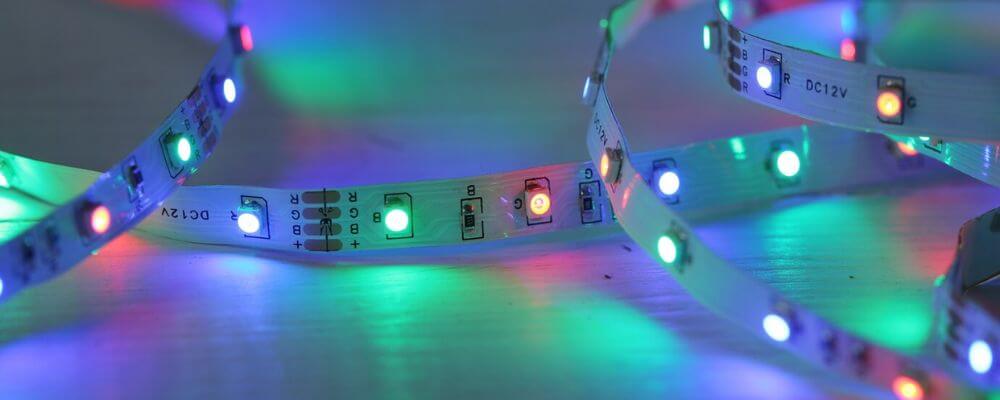
What Are The Types Of LED Light Strips?
There are many types of LED light strips based on their designs, how the specific LEDs are controlled, and color differences, shapes, sizes, power levels, use applications, etc. Let's explain them one by one.
The most basic types of LED Strips based on functionality and color are:
- Single-color LED Strip (white or a single fixed color): These LED strips emit a single, consistent light color, perfect for creating a uniform and subtle glow. It is the simplest form of LED strips that can be customized the way you want by its wattage, voltages, brightness, color, etc.
- Adjustable or Tunable White CCT LED Strip: Tunnable White LED Strip, or Dynamic Tunnable White or CCT, allows you to adjust the color temperature, providing warm or cool white light. You can change the color temperature ranging from 2000 to 6000k to have warm white, cool white, or cozy white color lighting effects.
- RGB LED Strip: RGB LED strips can display more than 16 million colors by mixing red, green, and blue LEDs. Every single LED is addressable as it has its 3-in-1 chip inside it that allows triggering the light individually for changing, strobing, and changing the different color effects. It is perfect for creating vibrant and dynamic lighting effects.
- RGBW LED Strip: These LED strips combine the color options of RGB with a dedicated white LED, offering a broader range of colors and improved white light quality. It has 4 in 1 LED chip inside it, which combines Red, Green, Blue, and White LEDs into one strip.
- RGBCCT LED Strip: RGBCCT or RGBWW strip has 5 1 LED chips that can combine five colors of LED in one single strip. When you need more color effects than RGB color effects, this uses the color temperature control to RGB to adjust white ambient lighting, allowing you to fine-tune both color and warmth.
- Pixel RGB Strip: Pixel RGB Strips are similar to addressable RGB strips and a type of addressable RGB strip but are not entirely the same. Compared to addressable RGB strips, pixel-led has a tiny controller for each set of R, G, and B LED strips and implies a higher density of LEDs per meter, which can result in more detailed and intricate lighting patterns and effects. They are often used in applications where precision and intricate designs are required, such as LED displays and digital art installations.
LED Strips based on lighting types are :
- Asymmetric LED Strips: Asymmetric LED strips reduce unwanted light glare and pollution by emitting light in a specific direction area, making them ideal for accent lighting and highlighting. It is seen in the street lamps, stadium lights, etc.
- Symmetric LED Strips: Unlike Asymmetric LED light strips, Symmetric LED strips distribute light evenly in large areas in all directions without concentrating on a specific site. So it is the best fit for an ample outdoor space.
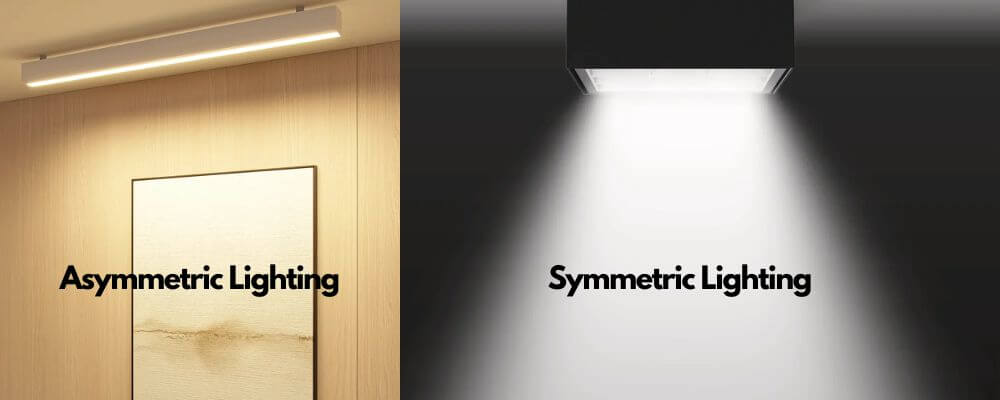
Based on Electrical Characteristics and power levels:
- Constant Current LED Strips: Constant current LED strips are designed to operate at a consistent current level, ensuring stable performance and brightness. For a 60-meter LED strip reel, it is LEd of 48V constant current.
- Constant Voltage LED Strips: Constant voltage LED strips maintain a steady voltage level, making them a versatile choice for various voltage configurations. For example, in the 5-meter length LED strip, there are 12V and 24V, and in the 50-meter length reel strip, there are 48VAC/ 110VAC/ 120VAC/ 230VAC/ 240VAC, etc.
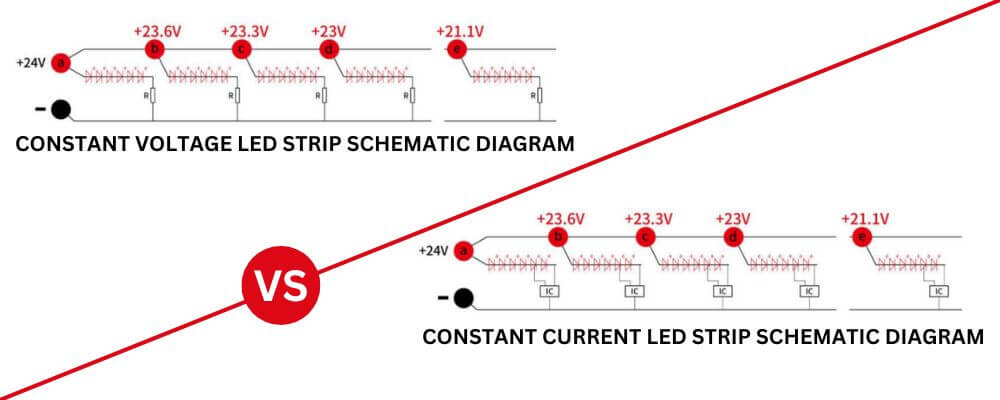
There are other distinctions of LED based on individual control of LED:
- Addressable LED Strips: Addressable LED strips have each LED module individually controllable, allowing you to set the color and brightness of each LED separately, giving you a high level of customization. Addressable LED strips allow complex and dynamic lighting effects, including animations, patterns, and color-changing sequences. They are commonly used for creating intricate lighting displays, digital signage, decorative lighting, and special effects in applications like architectural lighting and entertainment. One typical addressable RGB LED strip is WS2811.
- Non-Addressable LED Strips: Non-addressable LED strip has groups of LEDs that share the same color and brightness settings and have no control over each LED. You can only control sections or segments of the strip as a whole. It provides uniform lighting across each part, ideal for applications where you don't need to do intricate color changes or animations. They are often used for ambient lighting, accent lighting, under-cabinet lighting, and general illumination where consistent and simple lighting is sufficient.
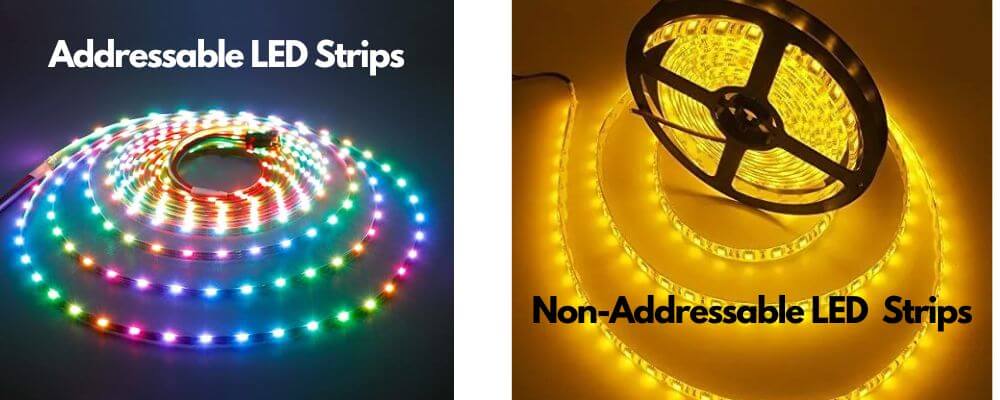
Types of LED Light Stips based on LED (SMD) Size :
LED light strips are another standard categorization based on the size of the LED lights, which are expressed as SMD - surface mounted devices, as the LED is mounted in the flexible printed circuit board (FPCB) by soldering. However, these types are expressed in a 4-digit number where the first two digits refer to its width and the second 2 digit refers to its length in minimizer.
For example, SMD3528 means the LED light size is 3.5m in width and 2.8m in length. The most common types of SMD sizes are 3528, 5050, and 2835. Other new types are 5630 and 5730. Different less common types are 3014, 4014, 7020, 8020, etc.
Let's introduce the three most common types:
SMD3528: It is a single-color type with very low power and non-addressable LED lights.
SMD5050: It is an addressable LED strip with 3 RGB LED and high power levels.
SMD2835: It's also a single-color SMD but with higher power levels. Though it has similar surface dimensions, the emitter area is larger.
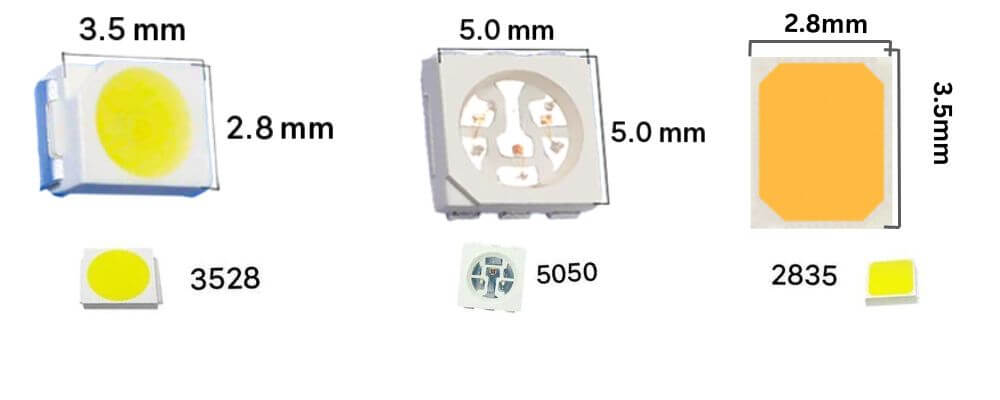
What Are The Features Of LED Light Strips?
The LED light strips are used in a wide range of applications, both indoor and outdoor, architectural elements, artwork, or decorative features because of their super convenient features. Here are some main features of today's modern LED light strips:
Adjustable Length: You can cut the LED strip to any length in the cut lines and reconnect it to another part of the strip to design your project.
Color Effect: There are many options for different single colors and endless possibilities to enjoy other color effects by combining Red, Green, And Blue.
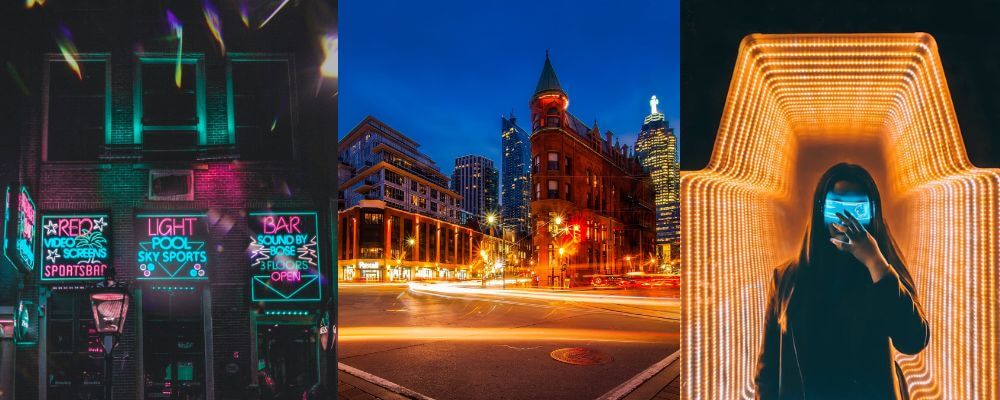
Flexible: It's super flexible, and you can bend it vertically up to 90 degrees, and it still won't break. No matter whether your use application element is round, square, or any shape, it is possible to cover it.
Low Profile: Because of their low thickness, LED strips can be installed in any tight space, and the strip doesn't bother your eyes, no matter if it is installed on what surface.
Waterproof and Outdoor Protection: It has different layers of additional IP rating protection for use in other environments, for example, indoor dry spaces, outdoors in the rain, in a boat underwater, or dusty places.
Color Control Temperature: Some LED strips offer tunable white or adjustable color temperature features, allowing you to switch between warm and cool white lights.
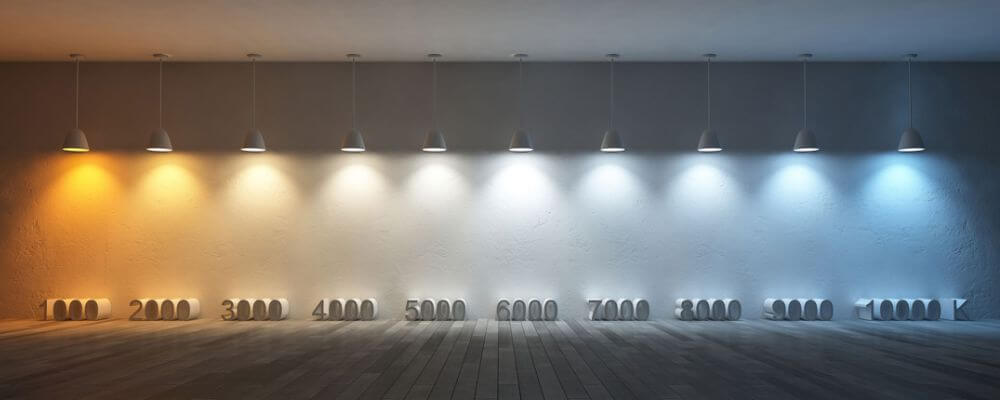
Customizable: LED light strips are customizable for any specific application project requirements. You can get a custom program of different color effects, animation, CRI - color radiation index, length, width, voltage, brightness, and many more.
Dimmability: Many LED strips are dimmable, allowing you to adjust the brightness to suit your preferences and create the desired ambiance.
Easy Installation: The strip has adhesive backing, making installation simple and hassle-free. You don't need to call any technician or technical knowledge to install LED lights. LED strips can be affixed to various surfaces, including walls, ceilings, and furniture.
Remote Control & Smart compatibility: LED strips are compatible with remote control or smart home systems, making it easy to adjust settings and control the lighting remotely.
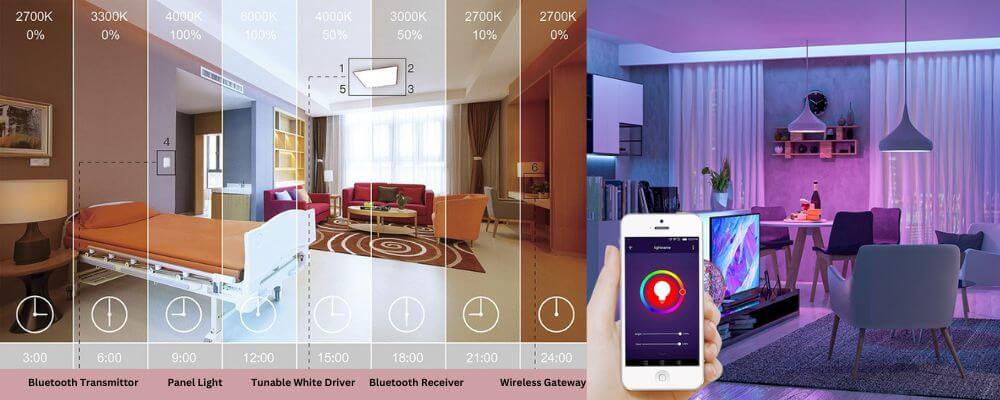
What Are The Benefits Of LED Light Strips?
What do you think is the behind of today's revolutionized lighting world? It's LED light strips. And behind these LED's influential lighting, there are its numerous benefits. Some of them are
Lower cost: Compared to traditional fluorescent and halogen lights, LED strips can save 50% of energy and save energy bills.
Best Color Variety: You can find LED strips with any tone, white, or color and easily access millions of color effects by the controller.
Safe: Maximum LED strips come with a voltage level of less than 48, which is entirely safe for use and touchable by children.
Custom: You can control the color, length, CRI, brightness, and voltage.
More extensive Lifetime: LED light strips can last for more than 50,000 houses and must be replaced every 5 to 10 years.
How Do LED Light Strips Work?
The heart of an LED light strip is a semiconductor material with distinct energy levels that determine the color of the emitted light. When an electrical current is applied to the LED strip, it causes electrons to move from a higher energy level to a lower energy level within the semiconductor. This energy difference between the electron's higher energy state and lower energy state corresponds to the color of the emitted light. LED strips also contain electrical components such as resistors, capacitors, and diodes that regulate the flow of electricity and protect the LEDs from voltage fluctuations.
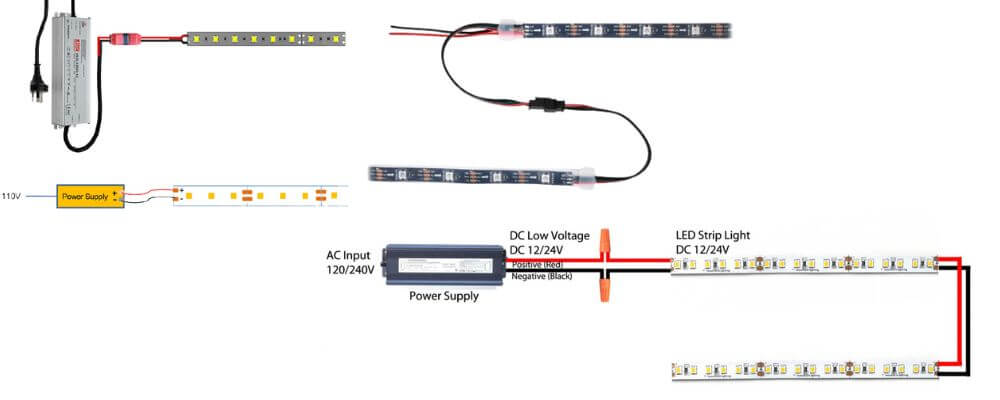
How To Connect LED Light Strips With Power Supplies?
For smooth operation, LED lights use a DC voltage power supply, usually 12V; if you run from central AC power, install a suitable power supply. Power supplies have flying wires on both sides, blue and green wires in one end for 230V AC, and brown/blue or black/red wares are available on another end for regulated DC voltage. Power supplies can be a 3-pin plug-in input side and multiple output wires for various power loads.
While connecting a single color strip light with a +12V power supply, connect the red +12-volt LED light strip ware to the brown/black +12V side of the power supply and the black ground wire to the blue/red ground ware of the power supply. When connecting an RGB strip light, the four ware need to be connected to the RGB controller of that RGB strip light. In an RGB LED strip light, three wires represent the three colors, and for their three LED lights, the black one is the most common +12V light. Make sure the 12V load wire length is as short as possible so it can save energy from losses.
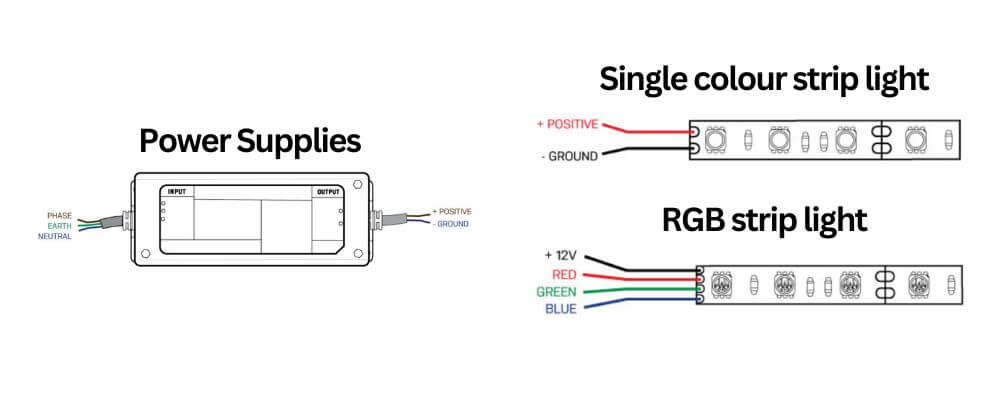
How Much Electricity Do LED Light Strips Use?
Compared to conventional incandescent lighting, LEDs use 85% less electricity to produce the same light output. For example, a 16-foot LED strip light can consume roughly 36 watts of electricity each hour, 216 watts for 6 hours or 0.216 kWh.
How To Install And Use The LED Light Strips?
Installing LED strips is a straightforward process that can be completed by following these general steps. Here is a full 12-step guide for installing LED strips:
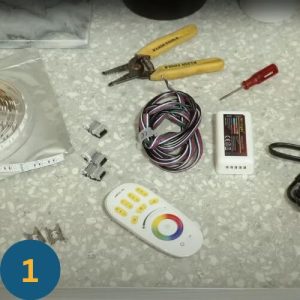
Step 1: Double-check your lights before cutting & installing
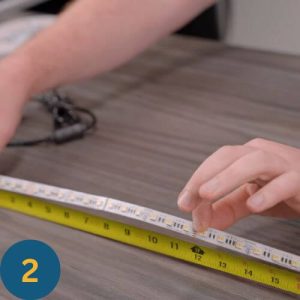
Step 2: Take measurements of the length of the area you want to place the lights on

Step 3: Prepare the surface; use a dry rag or dry paper towel to clean the area where you'll be applying the lights. The more cleaned the site, the more adhesive can hold on firmly.
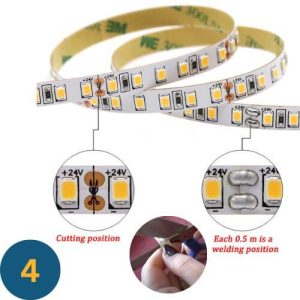
Step 4: Cut the strips to length very carefully along the marked lines
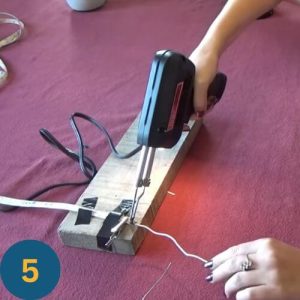
Step 5: Solder the LED strip wires to power supplies or use optional connectors
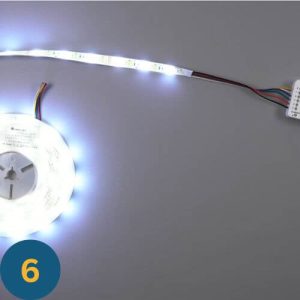
Step 6: Test the LED strip by attaching it to the power unit before installation
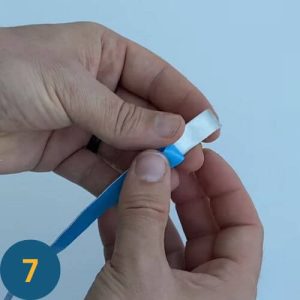
Step 7: Peel the plastic on the back of the LED strip to reveal the adhesive. Peel about 2 feet ahead to ensure the remaining LED strip doesn't catch debris.
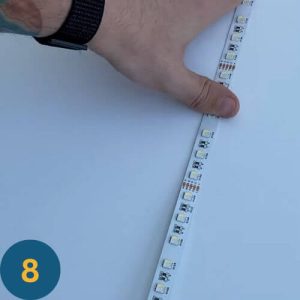
Step 8: Start applying the beginning of the strip against the wall.
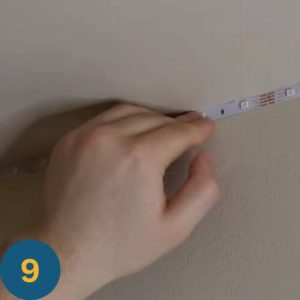
Step 9: Once fully installed, go back and press flat along the LED strip to make sure the adhesive strongly stays on the wall and to keep LED light strips from falling off of the surface.
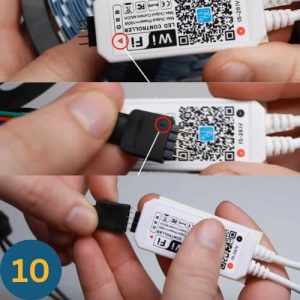
Step 10: Now, connect the LED controller receiver to the LED strip to power your lights. Make sure to face the two arrows at the connection point of the LED strip and controller receiver so the lights receive the correct signals.
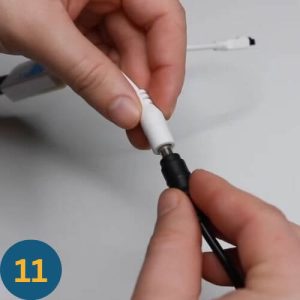
Step 11: Connect a power supply to the controller receiver and plug it into the closest socket.
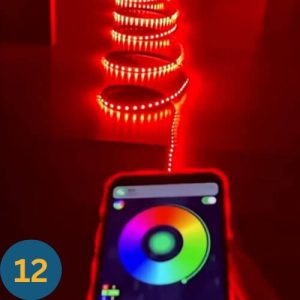
Step 12: Check your controller after installing the battery by pointing it at the remote receiver. If it doesn't work, check the battery is not inserted upside down. Using your phone, open the camera, point the remote controller at your camera, and press. A working controller will have a light when you watch it through your camera.
How To Cut The LED Light Strips?
You can cut the LED light strips by yourself, but if you don't know where to cut the LED light strips and how to cut the LED strips, notice the strips carefully. You will find the cutting line, sometimes with a scissor icon. If you still can't recognize it, see the pair of copper dots connection lines at the end of each LED unit.
If you want to end the LED strip where you want to cut, you can cut through or before the Cooper dots connection line, and you cannot connect another LED light strip with it. But if you want to join the LED later, it's essential to cut on the middle of the copper dots.
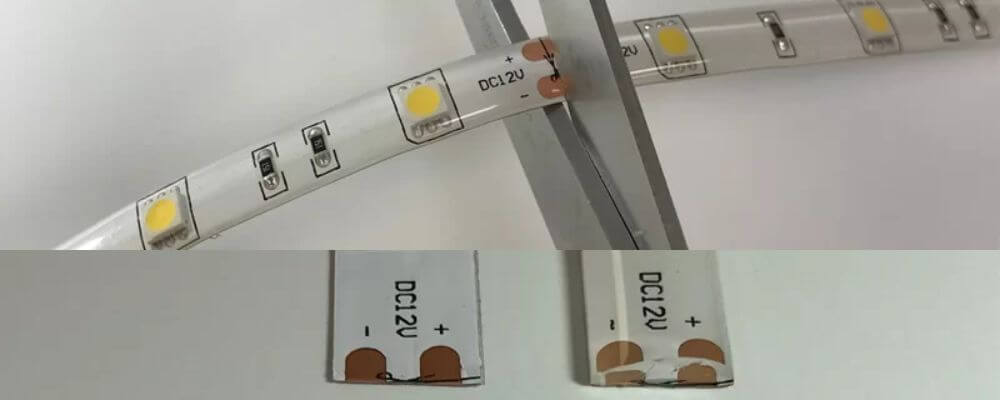
Where Can You Use LED Strip Lights? What Are The Applications?
LED strip lights can be used in thousands of applications in today's life to give everything a charming, warm, live, and premium view. Both in commercial and noncommercial decoration, it's become essential to have lighting, and LED occupies the major part. LED light also varies based on its uses and application, for example, LED strips to decorate your Home, LED light strips under the cabinet, bedroom LED light strips in the room, string light to decorate your curtain, LED light strips for cars, Ceiling LED light strips, Wireless LED light strips, grow light strips, neon lights, and so on. There are many lighting types where LED light strips are used, such as:
- Ambient Lighting
- Task Lighting
- Accent Lighting
- Entertainment Centers
- Shelving and Bookcases
- Closet and Wardrobe Lighting
- Staircase Lighting
- Outdoor and Garden Lighting
- Signage and Branding
- Architectural Lighting
- Hospitality and Restaurants
- Retail Displays
- Art Galleries and Museums
- Event and Stage Lighting
- Automotive and Vehicle Lighting
The versatility, energy efficiency, and wide range of colors of LED strip lights are suitable for various applications in both residential and commercial settings. Here are some common applications for LED strip lights:
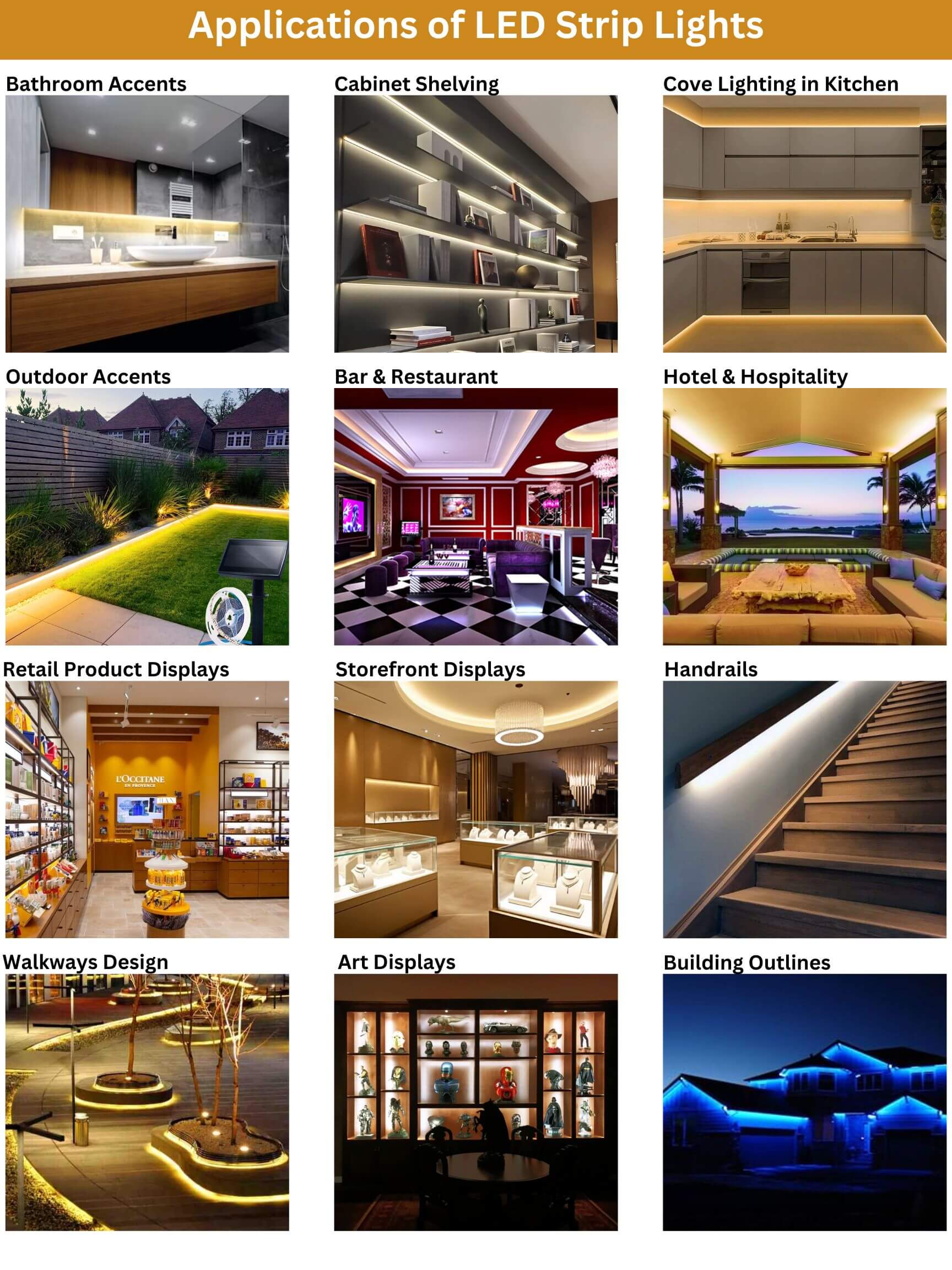
Where To Buy The Best LED Light Strips?
If you are looking for the best-LED light strips, Aimings (Shenzhen Aimings Optoelectronics Co., Ltd.) can be your destination for the Best LED light strips. Since the foundation, we have become a world-leading LED R&D manufacturer and a national high-tech enterprise committed to innovation, quality, and service.
Our products cover various lighting fields, including commercial lighting, lighting engineering, and intelligent engineering lighting applications covering your needs, whether residential projects or large-scale commercial installations. With various domestic and foreign qualification certifications, we adhere to the highest quality standards to ensure durability and reliability.
From 5050 monochrome light strips to 5050RGB light strips and even built-in IC magic light strips, we offer various colorful LED intelligent lighting projects. Our expert industry leader will help you to carefully select and buy the best LED Strip lights for your projects. Ready to illuminate your space with the Best LED light strips on the market? Contact us now for full-line technical support, top-notch products, and a lighting experience.
Contact Us Today
